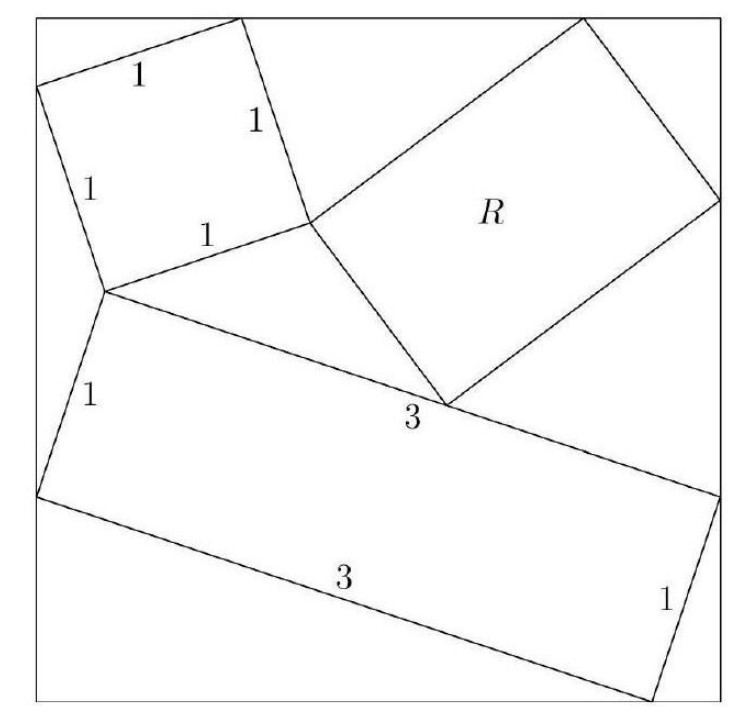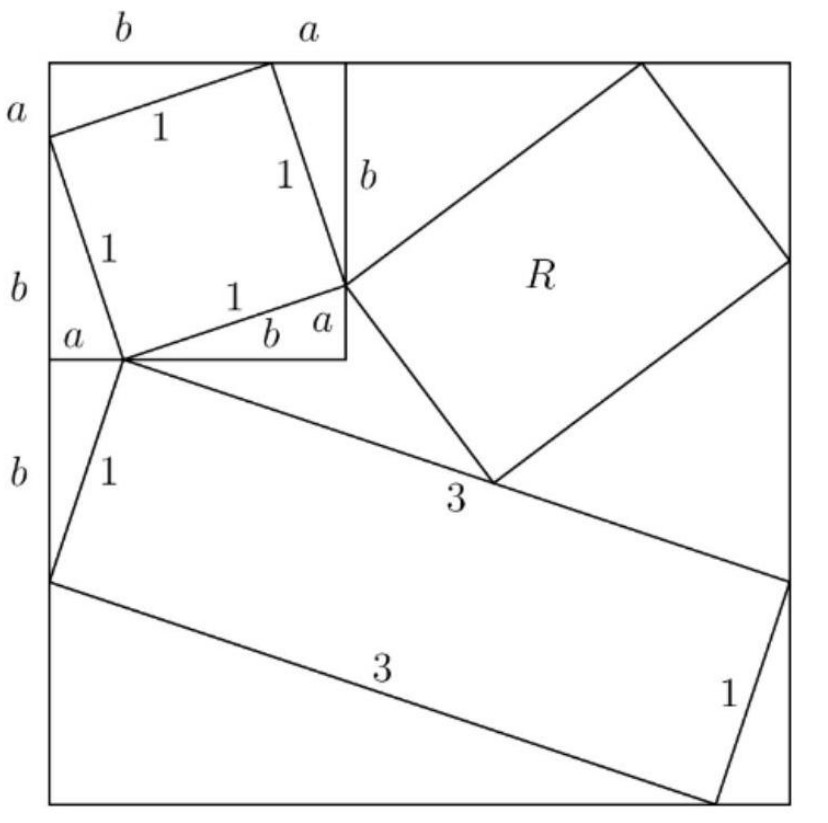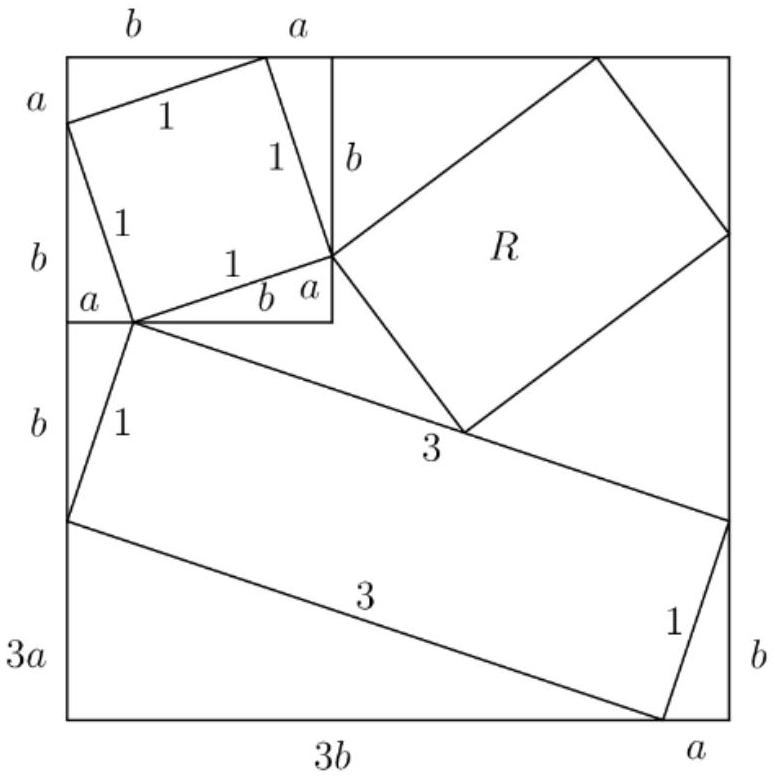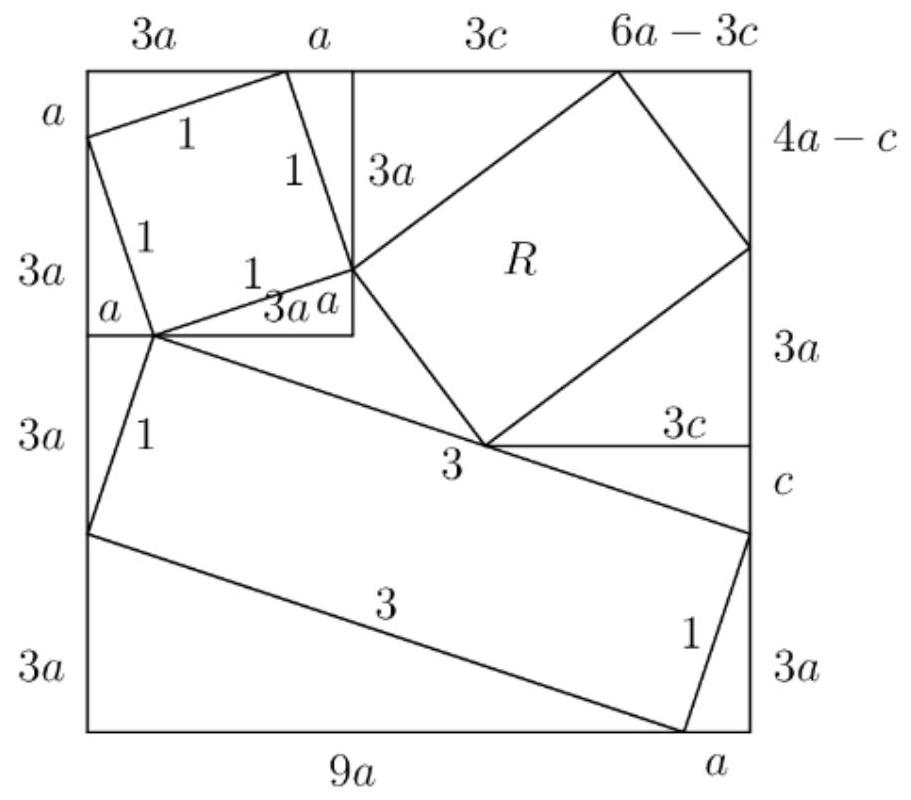Problem:
A rectangle with side length and , a square with side length , and a rectangle are inscribed inside a larger square as shown. The sum of all possible values for the area of can be written in the form , where and are relatively prime positive integers. What is

Answer Choices:
A.
B.
C.
D.
E.
Solution:
We see that the polygon bounded by the small square, large square, and rectangle of known lengths is an isosceles triangle. Let's draw a perpendicular from the vertex of this triangle to its opposing side:

We see that this creates two congruent triangles. Let the smaller side of the triangle have length and let the larger side of the triangle have length . Now we see by congruency that if we draw perpendiculars that surround the smaller square, each outer triangle will be congruent to these two triangles.
Now notice that these small triangles are also similar to the large triangle bounded by the bigger square and the rectangle by , and the ratio of the sides are , so we can fill in the lengths of that triangle. Similarly, the small triangle on the right bounded by the rectangle and the square is also congruent to the other small triangles by , so we can fill in those sides:

Since the larger square by definition has all equal sides, we can set the sum of the lengths of the sides equal to each other. . Now let's draw some more perpendiculars and rename the side lengths.
.jpg)
By similarity, when we draw a perpendicular from the intersection of the two rectangles to the large square, we create a triangle below that is similar to the small congruent triangles with length . Since we don't know its scale, we'll label its sides .
The triangle that is created above the perpendicular is congruent to the triangle on the opposite of the rectangle with unknown dimensions because they share the same hypotenuse and have two angles in common. Thus we can label these two triangles accordingly.
The side length of the big square is , so we can find the remaining dimensions of the triangle bounded by the rectangle with unknown dimensions and the large square in terms of and :

This triangle with side lengths and is similar to the triangle directly below it with side lengths and by similarity, so we can set up a ratio equation: . There are two solutions to this equation; and . For the first solution, the triangle in the corner has sides and . Using Pythagorean theorem on that triangle, the hypotenuse has length . The triangle directly below has side lengths and in this case, so special right triangle yields the hypotenuse to be . The area of the rectangle is thus . For the second solution, the side lengths of the corner triangle are and , so the hypotenuse of the triangle is . The triangle below that also has side lengths and , so its hypotenuse is the same. Then the area of the rectangle is .
The sum of the possible areas of the rectangle is therefore .
Using Pythagorean theorem on the original small congruent triangles, or . Therefore the sum of the possible areas of the rectangle is . Therefore , and .
The problems on this page are the property of the MAA's American Mathematics Competitions